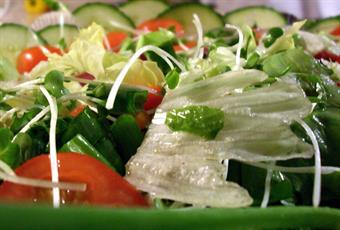Best Fruits and Vegetables to Eat
November 30, 2012 | Author: Judith DeCava, CNC, LNC.
Consider the betaine in foods like spinach, beets, whole wheat, whole sugar cane, and seafood. Betaine protects cells, proteins, and enzymes from environmental stress. A deficiency of methyl donors like betaine can disturb liver metabolism, resulting in elevated homocysteine, decreased S-adenosylmethionine (SAM), and inadequate fat processing (leading to fatty accumulation, disturbed blood fat and cholesterol levels). Messing up liver metabolism can contribute to various diseases from cardiovascular and liver problems to dementia and kidney damage. Betaine can lower fatigue and increase endurance, but isolated betaine helps only a little or not at all; it is best obtained from whole foods.
What’s the important part in garlic? Some scientists say it’s the allicin content. Yet when allicin is extracted, even from a natural source, it is no longer fully natural. Allicin or any other single food component never occurs in nature. There is no plant in the wild that is just allicin, and taking allicin by itself in large amounts does not produce the same results as taking food containing allicin. Food or herb parts never yield the superior results of the whole package.
Colors or pigments in foods can indicate the presence of nutrients like flavonoids, including carotenoids (like beta-carotene) and anthocyanins. These compounds are antioxidants, but they also have many other nutritional benefits. Flavonoids benefit immune responses, inflammatory processes, blood sugar metabolism, and blood vessel integrity, among other things. They may facilitate signaling between cells and silence potential disease-fostering changes. Orange and red carotene colors may help reduce the risk of heart disease, diabetes and more. Blue or purple foods contain plenty of anthocyanin which may aid in preventing obesity, mental decline, and other ills. Dark green leafy veggies have been linked with lowered cardiovascular and cancer risks.
Apples and other foods high in fiber may be as good for your lungs as they are for the rest of you. Research suggests that people who eat high-fiber foods are less likely to have trouble breathing or to develop chronic cough. Fiber lowers blood sugar levels, reduces inflammation, and keeps the digestive system in working order. Fiber comes from whole fresh fruits and vegetables, beans, legumes and whole grains. Try getting fiber from a fractionated vitamin pill!
Clearly, there are nutrients in whole foods that we don’t know how to extract and put into supplements. For example, researchers in Denmark subjected people either to several weeks of a multi-vitamin/mineral pill (with separated chemical compounds) or several weeks of a diet with plenty (21 ounces) of fruits and vegetables a day. After almost a month, everyone’s blood in both groups had reduced levels of chemical markers for oxidation of fats (lipids); lower lipid oxidation is believed to hinder atherosclerosis. The difference between the two groups was that the slowdown in lipid oxidation was greater among the fruit and vegetable eaters.
Join the conversation on the “Ask Holistic Cancer Coach Facebook Group.”
Original Article: Immune Perspectives Vol. XI, no. 2
A PUBLICATION OF THE CENTER FOR ADVANCEMENT IN CANCER EDUCATION
The Whole Food and Nothing But the Food by Judith DeCava, CNC, LNC [Adapted with permission from Nutrition News and Views, May/June 2006]
